MJ Acoustics REF 200-SR and Master-Class Ascot-SR
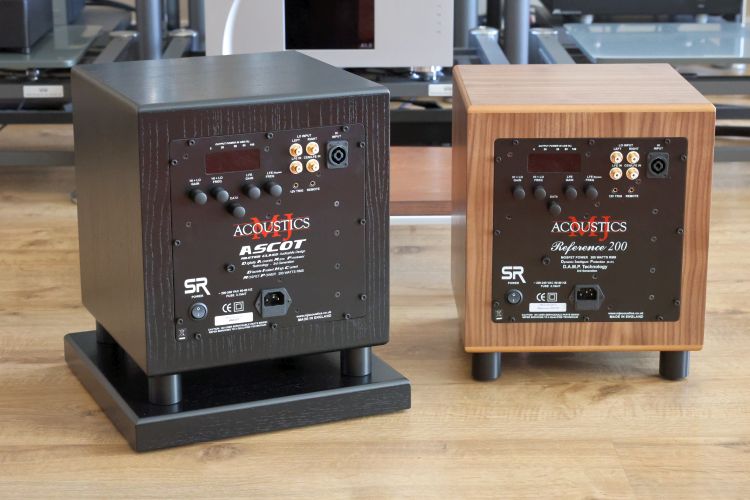
Initial Listening
My initial thought was to achieve a perfect time alignment so I positioned one of the subs (the Ascot) between the two main speakers and moved it in small increments fore and aft. I started by aligning the sub’s front panel to the same distance as the main speaker woofers to the listening position using a tape measure and listened to the integration. Then, I did the same but now measured from the center of the underside woofer, meaning that the sub was positioned closer. This last position quickly proved more precise and so I perfected the placement using Bosch GLM250VF Laser Distance Meter and then marked the positions on the floor. After some experimenting, the ideal cutoff frequency for my setup turned out to be 33Hz. With the phase control at zero, this did indeed yield a remarkably clean and accurate low bass!
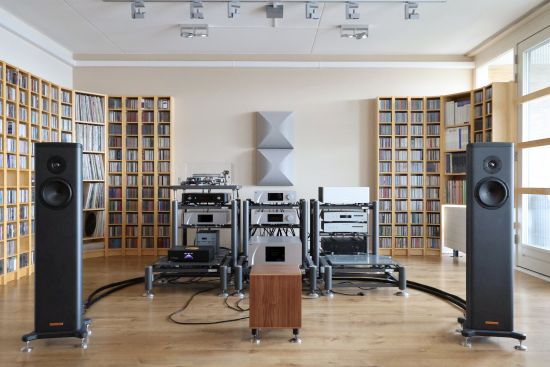
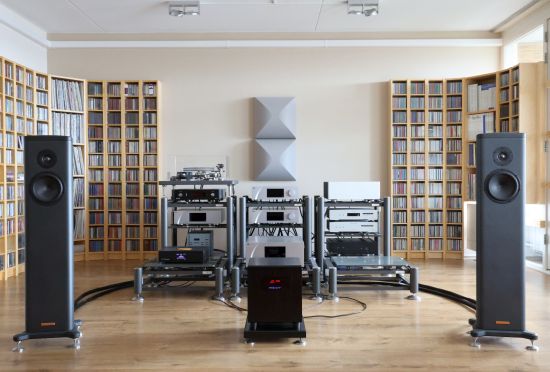
Moving the sub closer or further away produced a subtle thickening of the upper bass and lower midrange, which in turn led to a reduction of articulation and transient start-stop in the lowest bass. In its ideal position, however, the Ascot blended so seamlessly and provided such satisfyingly articulate low bass that I had no choice but to change my stance on subwoofers there and then. With a big smile on my face, I was already contemplating a future for my system with one or two subwoofers.
Spikes
Adding the supplied spikes made the Ascot sound faster and more immediate, and more coherent with the Magicos, which are also spiked. This was such a marked and convincing improvement that I decided to also add the spikes to the REF 200 and not look back.
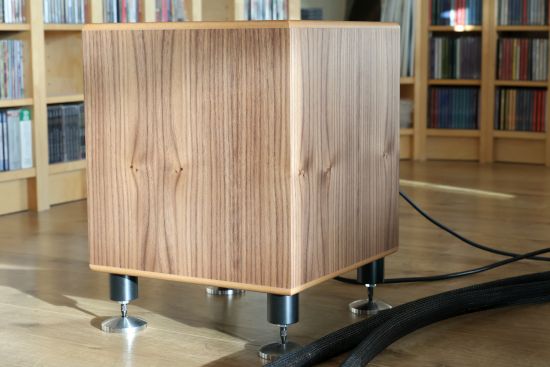
Placement experiments
For subsequent tests with the sub in other positions, as well as for the upcoming test with two subs, I always maintained the ear-to-woofer center distance, meaning that the sub(s) position(s) would always move along an arc at an equal distance from my ears.
There is a consensus that subwoofer placement is not critical because the signal is mostly mono and our ears are not sensitive to the localization of low-frequency sounds. While that may be true to some extent for home cinema purposes, I can’t help but note that it was quite audible when the sub was placed on the outside of the left or right speaker. One reason for this may be that, as noted above, the sub does not actually cease its output at the set cutoff frequency but rolls off gently and the higher frequencies are easier to locate. Or perhaps I am more sensitive to this than the average person. In any case, the sound was most centered and balanced, as well as most articulate, with the sub positioned right between the speakers.
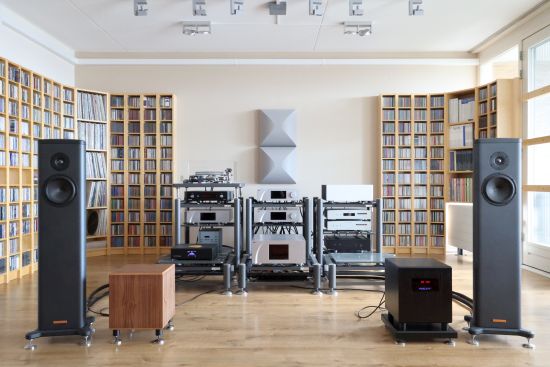
With dual subs used as a stereo pair in-between the main speakers (with the gain reduced by 3dB per speaker), the sound became more spacious which can be seen as a bonus, but it was also less super-tight and focused than with only the Ascot in the center. I also tried the two subs on the outsides of the speakers which did not provide further gains in soundstaging but did increase the boundary-induced colorations. This was not unexpected because I experienced very similar effects when placing regular speakers in this room and this is why the Magicos are positioned pretty much halfway into the room and well clear from the side walls. Also, it’s worth noting that these two subs do not sound 100% identical. After all, they are different models.
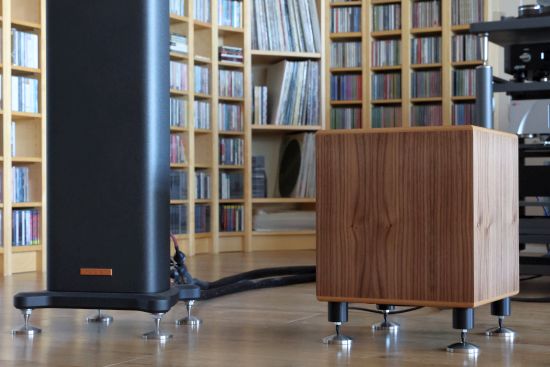
It wasn’t until I played a track that had a melody line made up of powerful short bass stabs that I became aware of an unexpected side effect. The lowest notes well beyond my speakers’ normal range sounded beautifully extended and powerful but some of the higher notes, far above the cutoff frequencies, were audibly attenuated. Because I initially thought this was the result of the dual subs’ wide placement, I went back to the Ascot by itself in the center position. Sure enough, it sounded cleaner, but with the same bass track, I again heard a few cancellations.
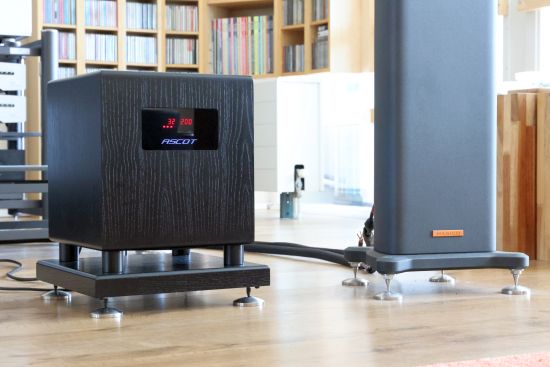
This called for a slightly more scientific approach: calibrated test tones and a dB level meter. Using the test tracks, I walked from 120Hz down to 10Hz and found that in both dual sub setups as well as in the single sub setup, there were certain frequencies that were peaking and others that were nulled. Most surprisingly, the nulling was not in the sub-33Hz range but at 70-90Hz, well in the main speakers’ range. Furthermore, these tests also revealed that the output fell off rather quickly below 30Hz. Needless to say, neither the nulling nor the roll-off below 30Hz is the subwoofers’ fault. My room and its modes are to blame.
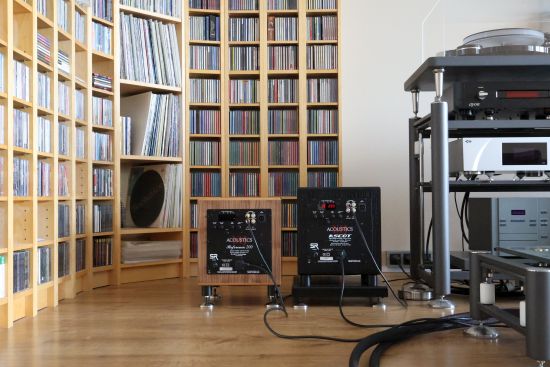
To create equal circumstances, I tried them in the left and right corners and also reversed their positions in each corner.
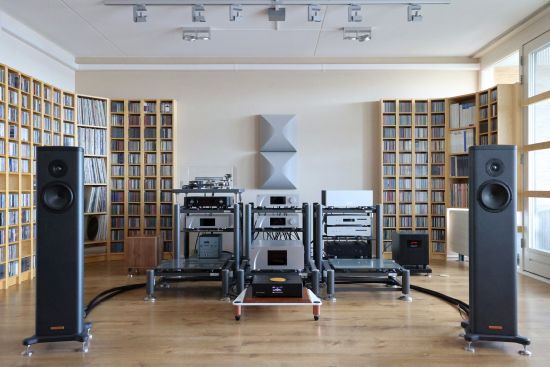
This prompted me to try the Ascot all the way into the far left corner 3 meters back, precisely as subwoofer manufacturers often recommend. I can see why, as corner loading provides the highest gain meaning that the sub has to work less hard which in turn should lead to lower distortion. But in my case, even after careful recalibration, this led to a rather boomy sound. I also tried the sub behind the audio racks more toward the center of the room but that was not better.
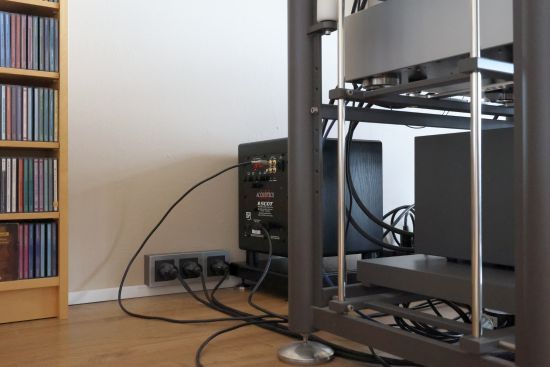
But the sub now also went effortlessly down to 20Hz, and with full force! With some R&B tracks, this was absolutely fantastic! Oh yeah, I sure appreciated the extra octaves! Now, what was I to do? I wanted full output down to 20Hz, but with as little coloration as possible.
Phase adjustment
Only after my experiments with the physical placement had yielded uneven results I was finally ready to let go of my conviction that a subwoofer needed to play 100% in phase with the main speakers. Well, in a way, that belief still held true, but only if you ignored the newly introduced issues.
For the next test, I set the cutoff frequency to its highest setting of 120Hz so that any nulling would be clearly audible as well as measurable. Interestingly, even a relatively low Phase setting of 20 degrees already started curing the aforementioned cancellations while higher phase values actually started summing frequencies higher up and helped strengthen the main speaker’s output at the point where the room previously always slightly attenuated the Magicos’ output.
Now I was really excited! Helped enormously by the MJ Smart Remote app and its ability to store presets, I made 3 different phase settings for the Ascot: 0 degrees, 90 degrees, and 180 degrees. Then, I played the same calibrated test frequencies and noted the measured output while flipping through the 3 phase settings. This proved highly illuminating! There were some variations between the 3 phase settings but sure enough, one of them turned in the lowest deviations and thus the best performance: the 180-degree setting!
While the measurements now looked just about perfect, I wondered, with the sub now being in reverse phase compared to the main speakers, would they still sound good?
After re-setting the cutoff frequency to 33Hz, I played some familiar tracks. Interestingly, whilst the sub’s output wasn’t quite as ultra-tight and articulate as with a zero phase setting, overall, the sound was now so much clearer and, surprisingly, actually more coherent! Armed with this new knowledge, there was only one more thing to do, which was to get the sub to play all the way down to 20Hz.
At this point, I played around with the sub’s physical position for an entire evening but I’ll spare you, dear reader, all the variables that I tried. Let’s jump forward to the point when I found the ideal placement. As it turned out, placement between the rear of the left speaker and the front row audio racks proved ideal in terms of playing cleanly and coherently, as well as reaching all the way down to 20Hz. All this may seem like an awful chore but I was actually truly enjoying myself because the sound kept getting better and better all while I was learning hitherto hidden but very important aspects about my room as I went along.
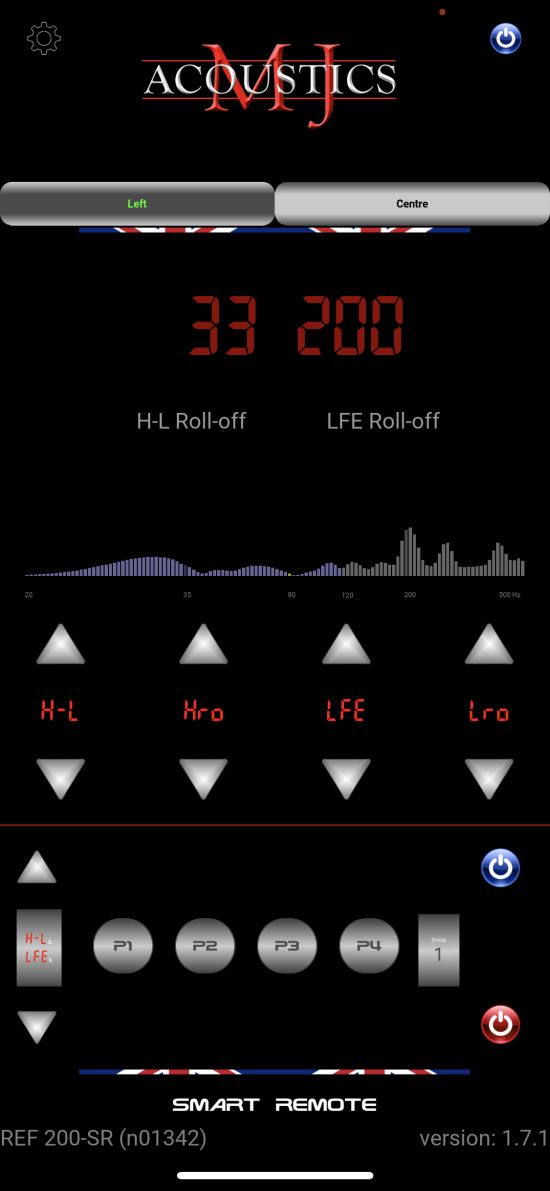
Above is a snapshot of the MJ Smart Remote app. Note that this is not white noise but a random music track which is why the curve is not linear. Below is a snapshot made using the “Analyzer” iPhone app while playing a particularly bass-heavy track. Granted, this is still very far from a scientifically accurate measurement (no calibrated mic, no white noise, etc) but it does show that the subs have no problem diving as low as the manufacturer claims they do.
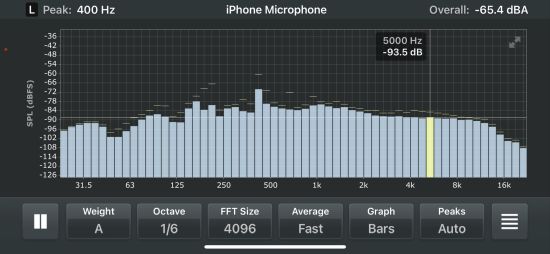
Finally, since the sub was now positioned further away, the phase control could be readjusted to account for the additional distance from the listening position. With this in mind, I had positioned the sub precisely at a distance from the initial position that corresponds to a quarter sine wave (90 Degrees) which is ~110cm at 80Hz. This way, I could set the phase to a clean and round 90 degrees. Not that it was needed at all since the phase can be adjusted in single-degree steps but I guess this is just my OCD…
Then, the moment of truth.
Next: Listening Continued and Conclusion
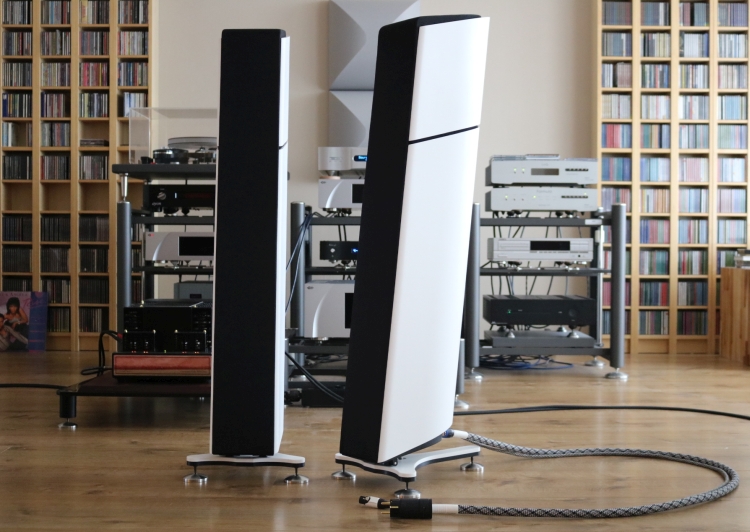
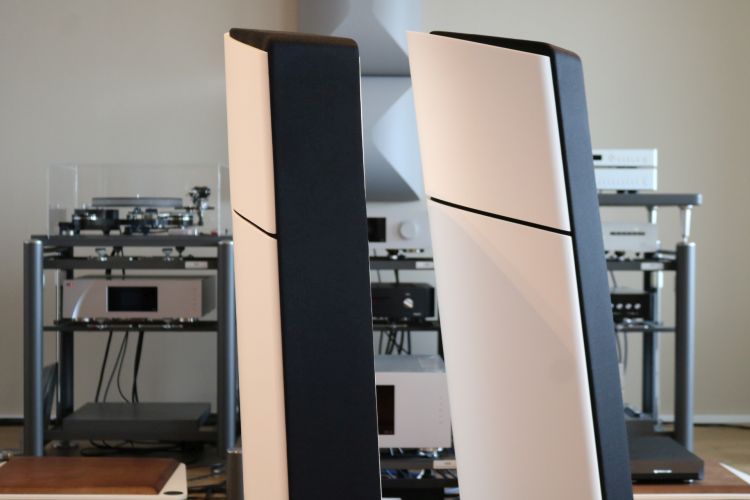
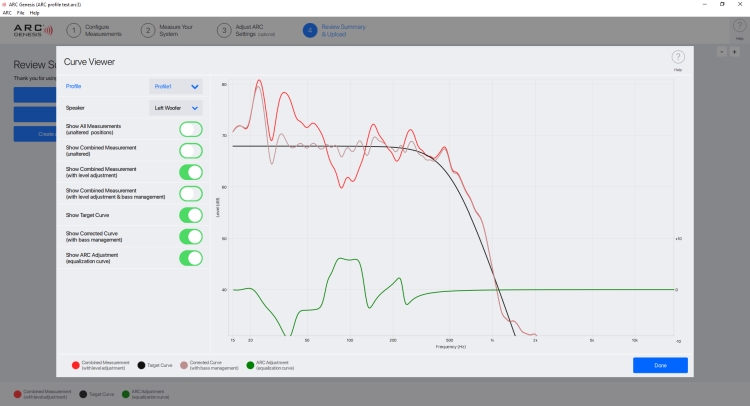
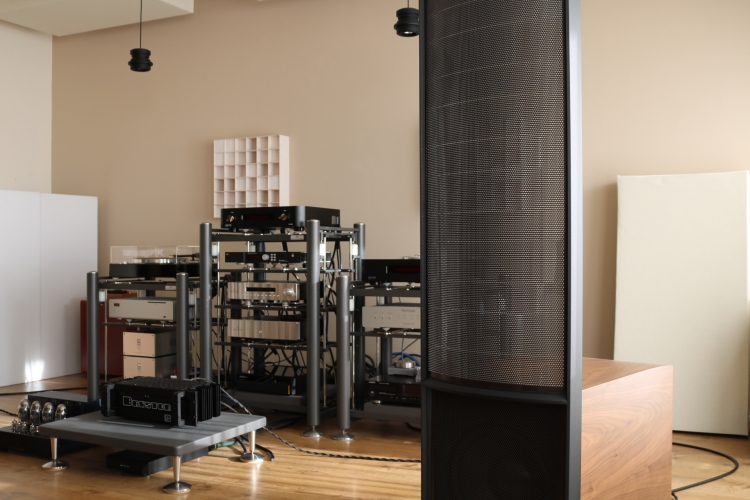
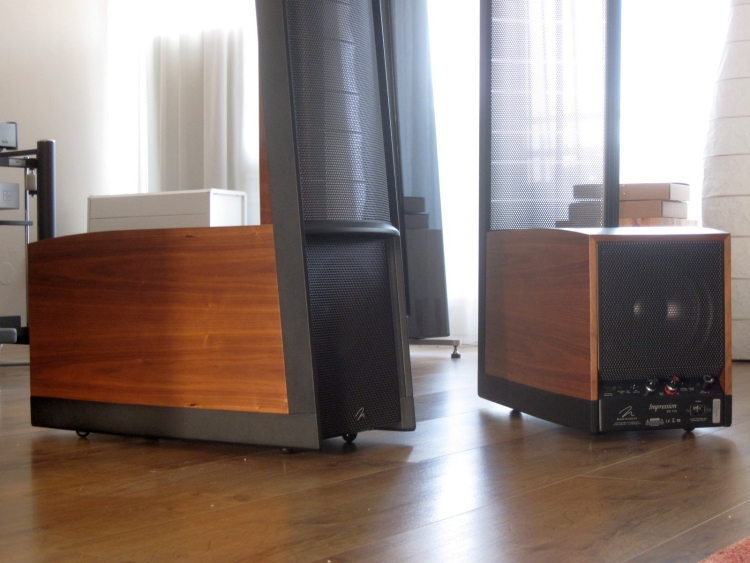
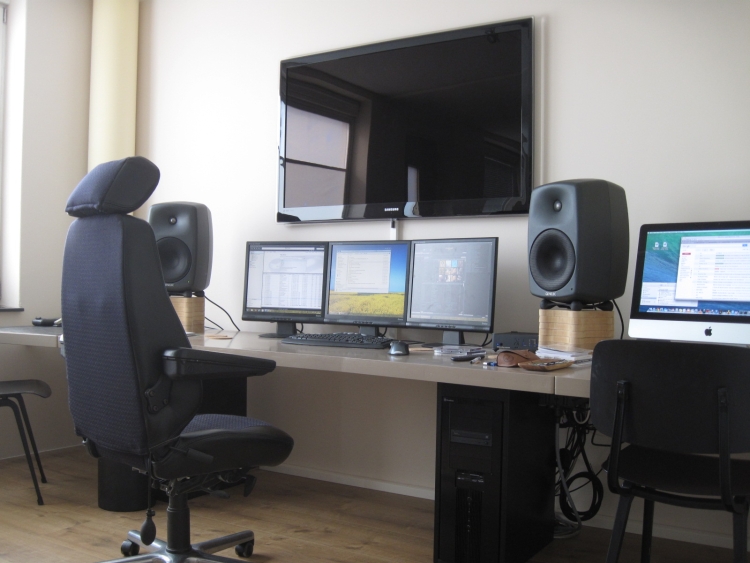
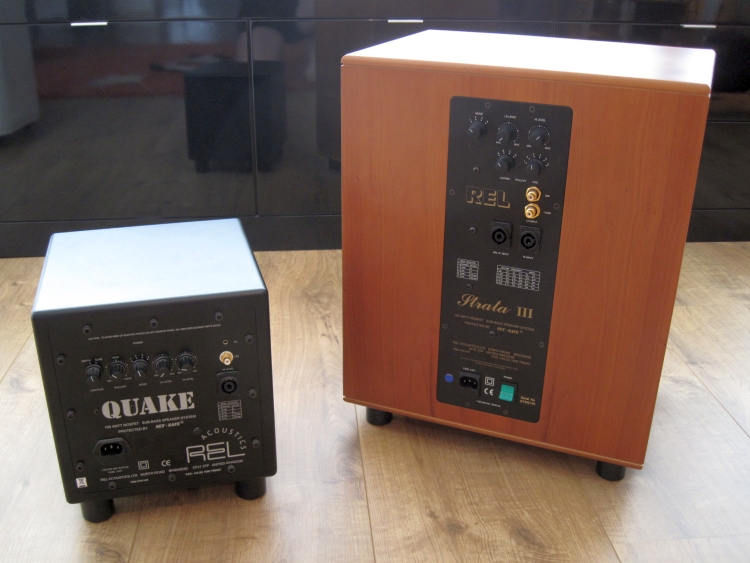
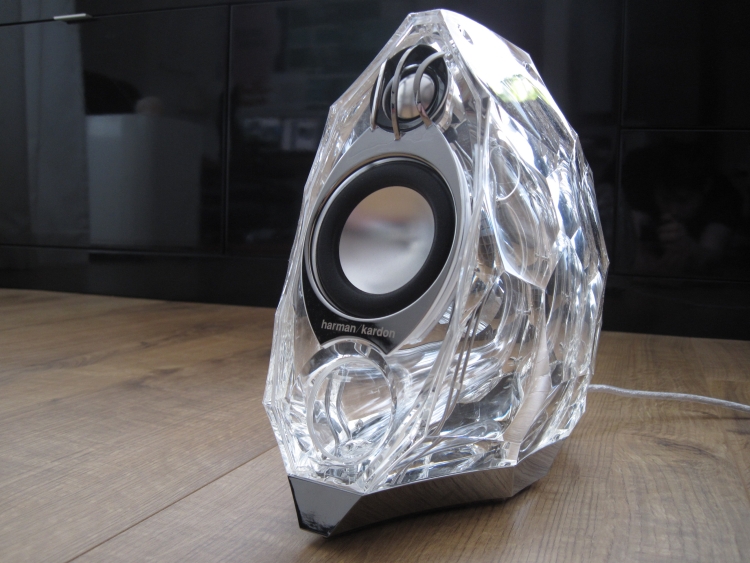
Thanks for the great review and the personal effort. I have been a fan of MJ Acoustics for a long time and they deserve this shot in the arm.
Hi Christiaan,
Happy 2023!
I’m writing to let you know that in response to your review I upgraded a pair of REL subwoofers (+ Dirac dsp calibration) to a pair of MJA Reference 200s.
I am overjoyed by the result! My system sounds a lot better than ever…
This is one of many times I have followed your advice to great effect. Thank you for what you do here! It has continued to make a difference to the quality of my experience of life… 🙂
Best wishes,
Jason
Hi Jason, all the best for 2023! That’s great to hear, thank you for the kind feedback:-)